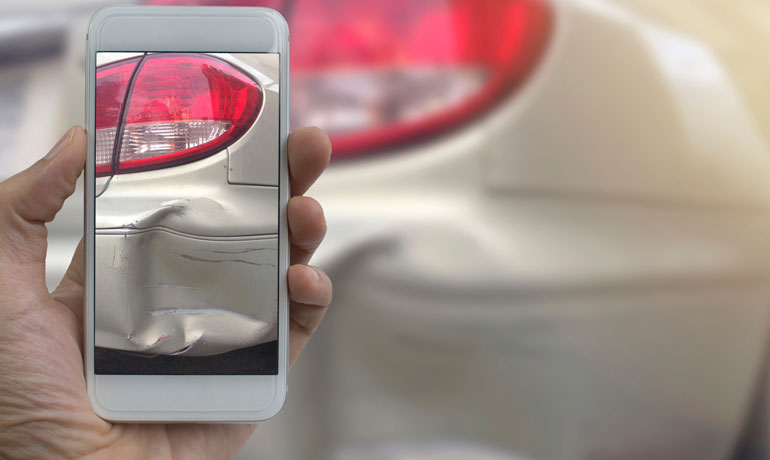Vehicle-related crashes are the leading cause of work-related deaths. In addition to the potential for loss of life, work-related automobile accidents expose businesses to liability risks, legal expenses, lost time, decreased productivity, and increased insurance and workers’ compensation rates.
Whether your business leases a single-passenger car or owns an entire fleet of commercial vehicles, auto liabilities must be monitored in order to try to prevent these ramifications.
Businesses can actively manage auto risks by setting driver qualifications, creating driving rules, and implementing driver training. Review the following guidance to learn more about how to reduce auto claims for your business.
Set Driver Qualifications
Setting and keeping standards for drivers can greatly reduce the risk of auto accidents. Review motor vehicle records (MVRs) for all new employees; review them annually for every driver. MVRs contain important historical driving information on an individual’s moving violations, driving-under-the-influence (DUI) offenses, vehicular crimes and other types of point accumulations. Work with your risk management professionals to determine appropriate standards for your business. Some qualifications to consider are:
- No serious driving violations—In the past three years, drivers should not have any recorded DUIs, hit-and-runs, incidents of reckless or negligent driving, driving with a suspended license or driving 15 mph over the speed limit.
- Fewer than three moving violations—In the past three years, drivers should have fewer than three incidents of speeding, changing lanes improperly, running red lights or failing to yield.
- Fewer than two at-fault accidents—In the past three years, drivers should have no more than one at-fault accident. At-fault accidents include any incident where the driver is cited with a violation, negligently contributes to the accident, or is involved in a single-vehicle accident.
Mandate Seat Belt Usage
Wearing a seat belt can reduce the risk of injury or death by 50%.
Motor vehicle-related injuries are twice as costly as other work-related injuries, averaging $72,500 per injury claim. Fortunately, wearing a seat belt can reduce the risk of injury or death by 50%. Create a successful seat belt policy by:
- Assigning a high-level manager to support the enforcement of a comprehensive driver safety program
- Using on-the-spot surveys, motor vehicle monitoring, collision reports and company training sessions to ensure drivers comply with company policy
- Asking employees to sign a pledge saying they will wear seat belts
Minimize Distractions for Drivers
Crash risks are two to six times higher when a driver is texting or manipulating a cellphone, according to recent studies. Even talking on a cellphone is a cognitive distraction that may pull a driver’s focus from the road. Eating, drinking, adjusting the radio, talking to vehicle passengers and checking the GPS also cause significant distractions. To avoid these:
- Consider banning all cellphone use, even if it’s legal in your state or if a hands-free headset is used.
- Try voice-controlled devices, such as GPS, which will allow drivers to keep more of their focus on the road.
- Consider policies to limit the number of passengers allowed in a vehicle during work hours.
Utilize Technology
The use of modern telematics allows businesses to analyze fleet data, make informed decisions and increase productivity while cutting costs. Ways to utilize technology include:
- Using telematics—In-vehicle telematics allow fleet managers to watch their drivers for risky behaviors in real time. Monitored behaviors include speeding, hard braking, hitting the gas and not wearing a seat belt.
- Using dash cams—Dashboard cameras, often referred to as dash cams, can be used to monitor drivers, promote safe driving practices, and reduce liability if an accident occurs. Before adding dash cams to your fleet, review state-specific laws on privacy concerns related to videotaping your drivers and the public.
Prevent Theft
Not only can motor vehicle theft cause costly business delays, but if you or an employee is in the car during the attempted theft, the result can also be dangerous or even fatal. Although vehicle theft is covered under comprehensive car insurance policies, preventing theft is the best way to avoid dangerous situations or expensive delays. To minimize the risk of theft:
- Keep doors locked and windows shut. This applies any time you are away from the vehicle.
- Hide valuables. Keep your wallet, purse, phone, and other valuables hidden to reduce a thief’s incentive to break into your vehicle.
- Park in secure, high-traffic areas. Park near guard booths or store entrances if parking in a public garage. Keeping your car in a locked garage at home is the safest option.
- Use anti-theft devices. Use steering wheel locks or gearshift column locks to make theft more difficult. Most new vehicles have tracking devices, but these devices can also be purchased for older cars.
- Exploit your vehicle identification number (VIN). VINs are used by law enforcement agencies to identify stolen cars. Paint the VIN under the hood, under the trunk and on the engine to make it more difficult for thieves to sell parts of your car.
Train Drivers
Drivers can be a significant source of liability behind the wheel. By implementing regular trainings, fleet leaders can build trust with their drivers and reduce the risk of accidents. Some topics to cover include:
Intoxicants—Drinking alcohol impairs a driver’s reaction time, steering responsiveness and lane control. Educate drivers on the dangers of driving while intoxicated and monitor their driving for signs of intoxication.
Defensive driving—Significant anger, aggression or road rage behind the wheel was expressed by 80% of drivers in a recent survey. Aggressive behaviors include speeding, tailgating, blocking cars from passing or changing lanes and “punishing” other drivers with brakes or headlights. Train drivers to:
- Maintain an adequate following distance
- Use turn signals
- Allow others to merge
- Use high beams responsibly
Drowsy driving—A 2017 census estimated there were 91,000 police-reported crashes caused by drowsy driving. These crashes occur most frequently between midnight and 6 a.m and often involve a single driver with no passengers. To avoid drowsy driving:
- Get a proper night’s sleep.
- Avoid drinking alcohol before driving.
- Check prescription or over-the-counter drugs to see if they could cause drowsiness.
- Pull over for a 20-minute nap if you feel drowsy.
Seasonal hazards—Be aware of changing seasonal hazards. On a similar note, drivers not accustomed to particular weather patterns may need additional training. For example, a driver who isn’t familiar with cooler climates may not be used to driving on ice. Below are a few items drivers should be mindful of in each season:
- Summer—Warm weather leads to an increased number of walkers and cyclists. Look for pedestrians and cyclists everywhere, especially in low-visibility conditions.
- Fall—Back-to-school season means more children on the road. Never pass a stopped school bus with red flashing lights.
- Fall also means a return to deer season. Avoid collisions with deer by staying alert, using high beams and wearing your seatbelt.
- Winter—With snow and ice on the ground, it’s important to drive slowly, accelerate and decelerate slowly, and increase distance between yourself and other vehicles. When there are snowplows on the road, remember the road in front of them is usually worse than the road behind them. Pass with lots of room and keep your headlights on.
- Spring—The changing season means a return to roadwork construction. Stay focused and patient when driving in work zones. Be mindful of the reduced speed limit and remain alert.
Report an Accident
If an accident does occur, a great deal can be done to contain costs and minimize business interruption losses. Good reporting and proper procedures can help minimize the business costs. In the event of an accident:
- Pull your vehicle to the side of the road.
- Assess injuries.
- Don’t leave the scene of the accident.
- Collect as much information as possible.
- Alert the police or highway control.
- Begin the claims process with your insurer.
Purchasing the right auto insurance policy, keeping the proper documents in your vehicle, and ensuring your vehicle is emergency-ready with traffic cones and flares can be helpful if an accident does occur.
For more risk management guidance, contact Schauer Group today.






